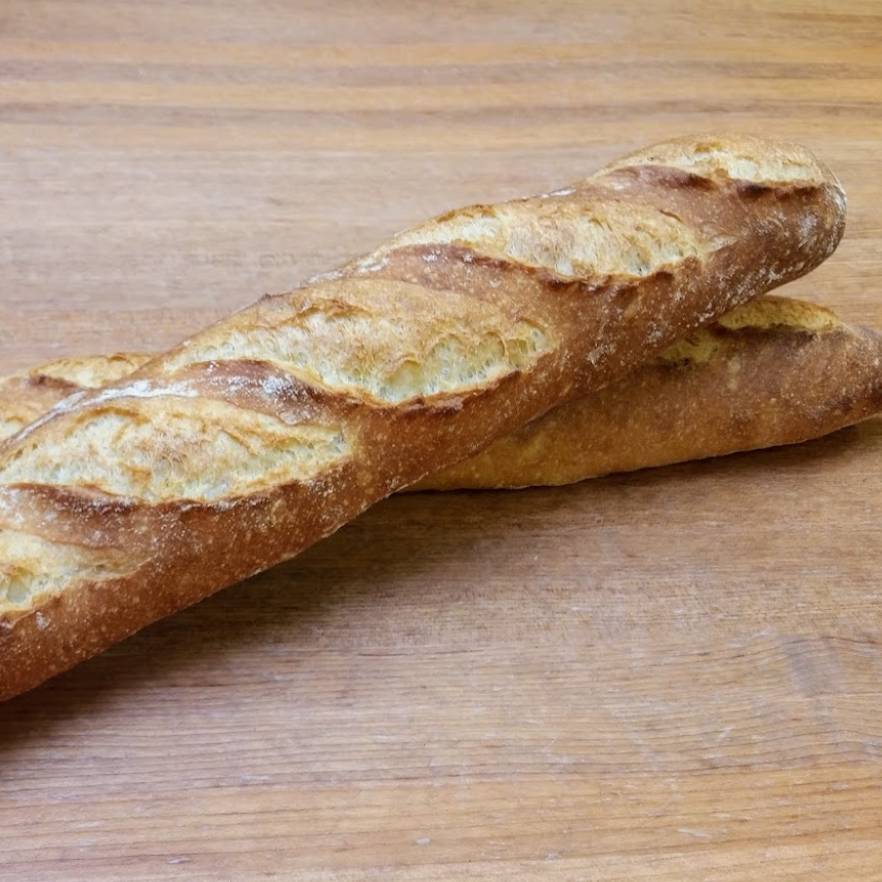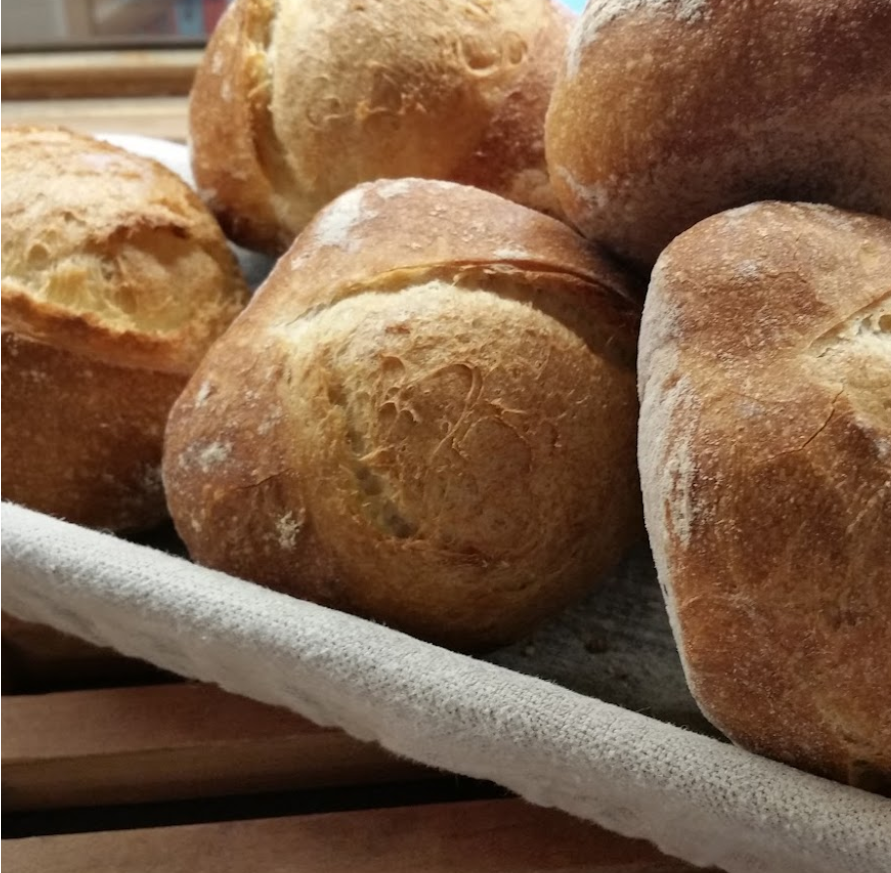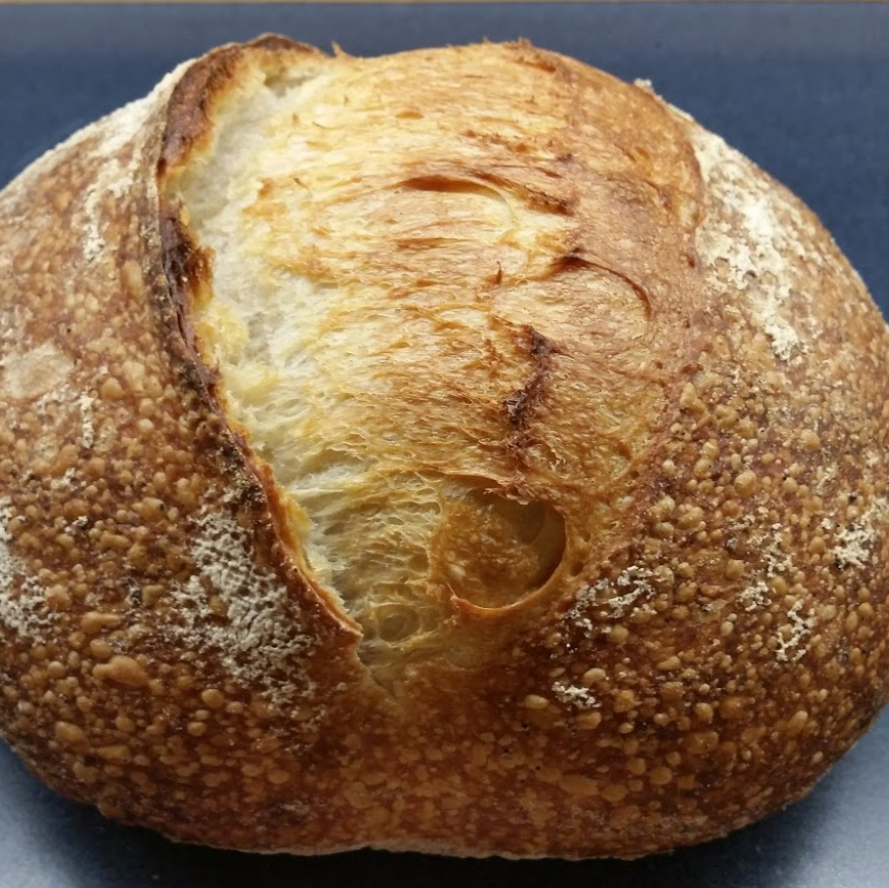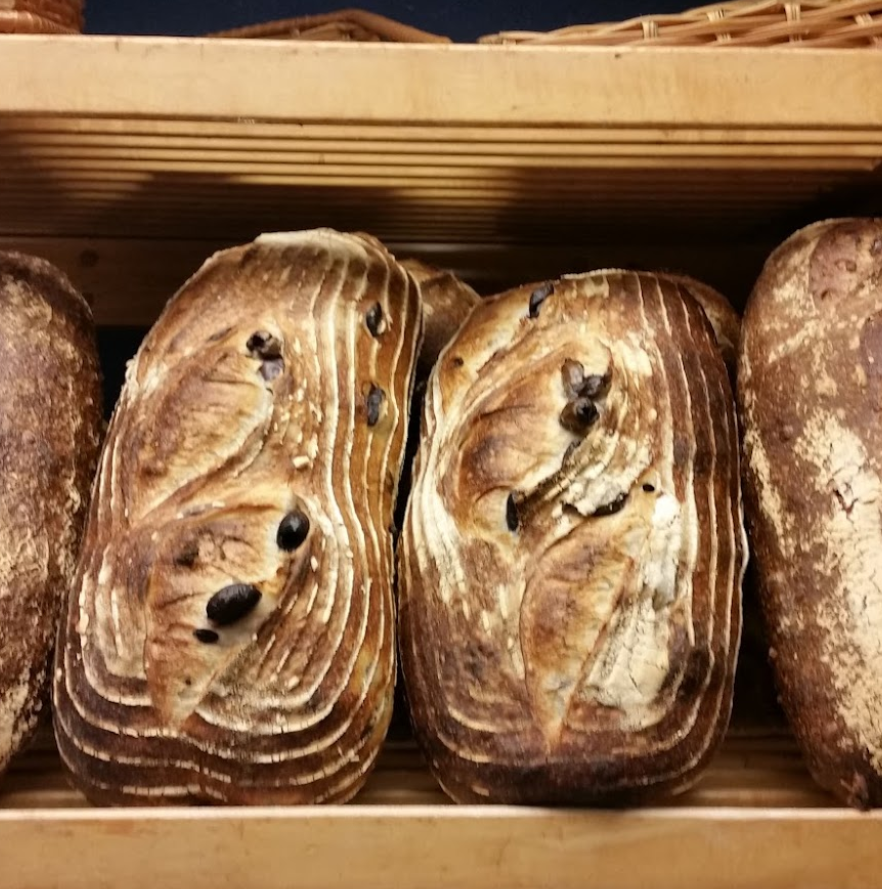French Bread vs Baguette. First things first, let’s get clear on what we’re talking about.
Why do we call the soft, fluffy stuff we buy in the grocery store “French bread” when it’s nothing like the French baguettes synonymous with a Paris vacation? If you’ve ever wondered about this, keep reading.
As an American who learned to bake bread in France under the strict regulations of the French government, I’ve picked up a few tricks along the way. I’m breaking down the real differences between these two types of bread and why it matters.

What is American French Bread?
American French bread is a broad term that refers to a type of bread made in the U.S. that is inspired by French baking traditions. Typically, when people refer to “French bread” in the U.S., they’re talking about a wide, soft-crusted loaf that’s often used for sandwiches, French toast, or garlic bread. While it draws inspiration from traditional French bread, it has adapted to American tastes, resulting in a loaf that’s quite different from what you’d find in a French bakery.
What is a Baguette?
A baguette, on the other hand, is a specific type of French bread that’s easily recognizable by its long, thin shape and crispier crust. The word baguette actually means “stick” or “baton” in French, which is a perfect description of its form. Traditional baguettes are usually about two feet long and have a golden brown, crunchy crust with a soft interior. They are often made with just four ingredients: wheat flour, water, yeast, and salt. A good baguette is all about simplicity and technique, often baked in a flat stone oven to achieve that iconic crispy crust.

Key Differences in French Bread vs Baguette
French Bread vs Baguette: Shape and Size
One of the most obvious differences is the shape of the bread. American French bread loaves are typically wider and shorter, while baguettes are long and thin. This difference in shape also affects how each bread is used and enjoyed. The shape of a French baguette allows for easy slicing, making it a favorite for dipping into soups or enjoying with a spread of butter.
French Bread vs Baguette: Crust and Texture
The crust is where things really start to diverge. American French bread often has a softer crust, which makes it perfect for sandwich loaves or French toast. In contrast, baguettes, especially traditional baguettes, boast a chewy crust that is delightfully crunchy when fresh. A crusty loaf like a baguette often results from baking at high temperatures, with the dough placed directly on a baking stone for optimal oven spring and a crisp crust.

French Bread vs Baguette: Ingredients and Baking Techniques
Both types of bread use similar basic ingredients: wheat flour, water, yeast, and salt. However, the baking techniques differ. Baguettes are often baked in a steam-injected oven, which contributes to their crispy crust. American French bread may not always be made with the same attention to crust development, leading to a softer texture. For the best baguette, French bakers often rely on a slow fermentation process and a specific type of French flour to achieve the perfect balance of texture and flavor.
French Bread vs Baguette: Taste and Use Cases
Baguettes are often enjoyed with minimal toppings, allowing the bread’s natural flavors to shine. Think of a simple spread of olive oil or a bit of cheese. American French bread is more versatile, often used for making hearty sandwiches, garlic bread, or as a base for more complex dishes. A fresh baguette pairs perfectly with a variety of French meals, while American French bread can be your go-to for a wide range of culinary creations.

Learning the Art of Bread Baking in France
Let me take you on a personal journey into the heart of French baking. As an apprentice learning to bake bread in France, I quickly realized that becoming a boulanger in France is a very strict process. Everything from the shape of the baguette to the number of cuts to how dark the crust is baked was strictly scrutinized, and their standards are incredibly high. But through this rigorous training, I learned to love the French people through their bread.
One of my favorite things about being a bread baker in France was learning why people want their bread in different shapes. Each shape has a different name, and different shapes lend different qualities to the bread. It was always fun to see customers come into the boulangerie and ask for the different shapes. Although all the bread starts from the same dough, the shape changes the characteristics of it. Whether it was a long, thin baguette, a round boule, or a short, stubby batard, each one brought something unique to the table. The pride that French people take in their bread is truly remarkable, and it’s something I carry with me every time I bake.
Working in a French boulangerie was one of the most rewarding experiences of my life.
The Role of French Law in Bread Baking
Bread is more than just a staple in French cuisine—it’s a symbol of French culture and history. The importance of bread in French society is so profound that it has been subject to strict regulation by the French government. The main reason for these regulations is to ensure that every customer receives a fair share of high-quality bread, regardless of the bakery they visit.
One of the most famous regulations is the pain de tradition française law, which mandates that traditional baguettes can only be made with four ingredients: wheat flour, water, yeast, and salt. The use of preservatives, additives like ascorbic acid, or any other ingredients is strictly prohibited. This law ensures that the quality and authenticity of French baguettes remain consistent across the country.
The Épi and Its Historical Significance
Among the many shapes of bread you’ll find in a French boulangerie, the Épi holds a special place. This bread, shaped like a shaft of wheat, is not just decorative; it has historical roots tied to the regulations on bread weight. Originally, the Épi was used as a way to add a little extra weight to a baguette. If a baguette was slightly under the regulated weight, the Épi could be added to ensure that each customer received their fair share of bread. This practice was particularly important in times when bread was rationed, such as during World War II, ensuring that no one was shortchanged on their daily bread.
A Strict Apprenticeship and the Art of Bread
My time as an apprentice in a French boulangerie gave me a firsthand look at how deeply ingrained these traditions are. The standards are incredibly high, with everything from the shape of the bread to the number of cuts on a baguette being strictly scrutinized. Each loaf must meet exacting criteria to be sold as la baguette, a term that carries weight under French law.
One of the main factors that differentiates French bread from others is the emphasis on artisanal methods. At the bakery where I apprenticed, we used levain, a natural starter that grows wild yeast, much like what you’d find in sourdough bread. This starter is a crucial part of what makes the bread so flavorful and unique. The dough rest and the environment in which the bread is baked, often in a hot oven on a baking stone, contribute to the development of a good bread with a crisp crust and a soft interior.
The Many Shapes of French Bread
One of the joys of working in a French bakery was learning about the different shapes of bread, each with its own name and unique characteristics.
At the bakery where I apprenticed, we prided ourselves on making artisanal baguettes. This means the entire process was done by hand, and we used a levain—a starter that grows the wild yeast found in sourdough breads. Needless to say, we made very good bread. Here are some of my favorites from that shop:
- Épi: This bread is shaped like a shaft of wheat and is not only beautiful but also deliciously crispy with a light, airy interior.
- Couronne: Shaped like a ring or a crown, the Couronne is perfect for tearing and sharing at a meal, with a crusty exterior and a soft, flavorful crumb.
- Campagne: Often referred to as “country bread,” Campagne is similar to a traditional French bread but with a heartier flavor thanks to the addition of rye and wheat flour. It’s robust and pairs wonderfully with cheese or hearty stews.
Other popular choices among our customers included:
- Pain de Mie: A soft, fine-crumbed white bread, perfect for sandwiches or toasting.
- Bâtard: A shorter, wider version of a baguette, with a slightly softer crust but the same delicious flavor.
When to Choose American French Bread
If you’re making sandwiches, French toast, or a dish that needs a softer crust, American French bread is your go-to. Its wider, softer loaf is ideal for absorbing sauces or holding up to hearty fillings. American French bread is also a good choice for those looking for a softer interior and a versatile loaf.
When to Choose a Baguette
When you want a simple, crunchy bread to accompany a meal, a baguette is perfect. Whether dipped in soup, topped with olive oil, or plain, its texture and flavor are unbeatable. If you’re looking for the best results, opt for a freshly baked, traditional baguette from your local bakery.
Baking Tips for Perfect Bread at Home
Whether you’re baking a baguette or American-style French bread, these tips will help. Follow them to achieve the best results.
Use the Right Flour
For baguettes and other French-style breads, using high-quality bread flour or unbleached flour is essential. These flours have a higher protein content, which gives your bread a chewy texture and helps it rise well. If you’re experimenting with country bread (pain de campagne), try adding a bit of rye flour or whole wheat flour to give it a heartier flavor.
Master the Levain
If you’re making artisanal baguettes, consider starting a levain or sourdough starter. A levain not only adds a depth of flavor but also improves the texture of the bread. It takes a bit of time to develop, but the investment is well worth it for the unique taste and structure it provides.
Don’t Rush the Dough
One of the main factors in achieving good bread is allowing the dough to rest adequately. After mixing your ingredients, let the dough rest in a warm place. Allow the yeast to ferment and the flavors to develop. A slow, long rise—sometimes overnight—can make a big difference in the texture and taste of your bread.
Get the Oven Temperature Just Right
For that classic crispy crust, preheat your oven to a high temperature—around 475°F (245°C). Use a baking stone or place your bread on the bottom of the oven to get a good oven spring. If you’re baking a baguette, consider adding a pan of water to create steam in the oven, which helps develop a crisp crust.
Use a Razor Blade for Scoring
Scoring the dough just before baking is crucial for controlling how the bread expands in the oven. A sharp razor blade, or lame, is traditionally used for this purpose. It allows the bread to open up at the cuts, creating those characteristic lines on a baguette. The direction and depth of the cuts can also influence the final shape and texture.
Experiment with Different Shapes
Once you’ve mastered the basics, experiment with different shapes like the Épi, Couronne, or Bâtard. Each shape lends a different texture and aesthetic to the bread, making the baking process even more enjoyable. Don’t be afraid to try out various forms—each one has its own unique charm.
Pay Attention to the Crust
The crust is often what sets great bread apart from good bread. If you prefer a softer crust, cover your bread with a clean kitchen towel as it cools. For a crunchier crust, allow the bread to cool uncovered on a wire rack.
Store Bread Properly
Refreshing Stale Bread
If your bread starts to go stale, don’t throw it away! You can refresh it by sprinkling it with a little water. Then reheat it in a hot oven for a few minutes. The crust will crisp up again, and the inside will regain some of its softness.
What’s Better: French Bread vs Baguette?
So there you have it. American French bread and baguettes share some similarities, but each offers something unique. Whether you prefer American French bread or the classic crunch of a baguette, you can’t go wrong. Next time you’re at the bakery, you’ll know exactly what to pick based on your mood.
